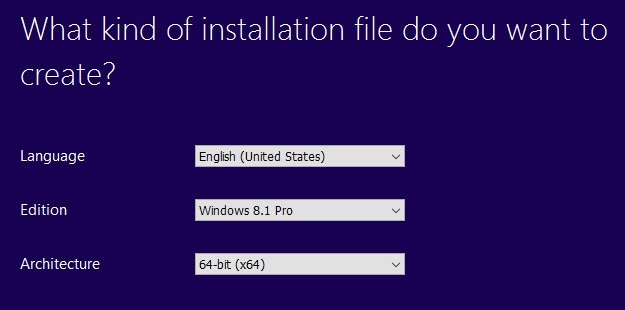Easy Way to Create Windows 10 bootable USB from ISO
※ Download: Windows 10 iso to usb bootable
If you have a valid Windows 7 or Windows 8. Your Options There are a couple of ways you can create a bootable Windows 10 USB Drive. There are mainly 3 methods to create a bootable USB Flash drive or bootable DVD. I did and Winnow show dell logo, and boot to blank screen.

This bootable USB then helps to start Windows 10 on your PC. Follow the below steps to verify whether you can boot from the USB drive. Some links in the article may not be viewable as you are using an AdBlocker.

Easy Way to Create Windows 10 bootable USB from ISO - Creating the Bootable Windows 10 USB Drive First, I will explain how you can manually create a bootable Windows 10 USB drive.
![]()
Microsoft has officially introduced Windows 10, making the new operating system available as a free upgrade, in the first year, to Windows 7 and Windows 8. Those who cannot take advantage of this deal will have to purchase Windows 10, which is now offered on USB drives, on top of DVDs and digital downloads. Bootable USB drives are a better option than DVDs, as they can be used on the vast majority of devices in use today, including slim ultrabooks which do not have optical drives. They are also much faster, so the time it takes to install Windows 10 is significantly lower, and pocketable, allowing you to easily carry one wherever you need. If you do not have a bootable Windows 10 USB drive, this detailed how-to guide takes you through all the steps involved in creating your own flash installation media. The Essentials First off, you will need a USB drive. The minimum capacity is 4 GB, and I recommend using a drive that is decently fast, so the time it takes to complete the whole process is minimized. Keep in mind that, no matter which path you take, all the files on the USB drive will be erased, so make sure to back everything up. Alternatively, you can use a microSD or SD card, which works just as well based on my experience. Get for the 32-bit Windows 10 or for the 64-bit Windows 10. You may also be able to download it directly , or. In order to create the bootable Windows 10 USB drive, you also need a Windows PC and an archiving tool like or if you do not yet have one installed. And, in order to actually get the latest operating system up and running on your device, you will also need a valid Windows 10 product key. If you have a valid Windows 7 or Windows 8. Otherwise the key you have entered may not be seen as valid during the setup phase. Your Options There are a couple of ways you can create a bootable Windows 10 USB Drive. My colleague Wayne Williams has explained how you can do this in. This works best if you do not have the Windows 10 ISO on your PC. If you have the Windows 10 ISO on your PC, you have two options. The method that I prefer involves writing a few lines in a command prompt window. This gives you more control over the process, and you also get to learn something new. The other method requires the use of a dedicated third-party tool that will handle the contents of the ISO and prepare the USB drive automatically. Creating the Bootable Windows 10 USB Drive First, I will explain how you can manually create a bootable Windows 10 USB drive. Here is where the archiving tool comes in handy, as you will have to use it to extract the contents of the ISO in a folder on your Windows PC. Accept the UAC prompt, if asked, to continue. Now that you have created the bootable Windows 10 USB drive, you can go to the next step: installing the operating system. How do you initiate the setup process? Both can be entered right after powering up the device or restarting it. After performing this step, your PC will automatically boot from the USB drive and take you straight to the Windows 10 setup. From there on, it is business as usual: enter your product key, if asked, and select where you want to install the operating system.
This article will guide how to create Windows 10 bootable USB from ISO file with UEFI support using this tool. ISO files are also called as disk image files, generally created from a CD or DVD using disk imaging applications. In our earlier article, we have explained how to and in this article let us explain how to create a bootable ISO USB disk for Windows 10. This will display the list of available connected disks. This tool will extract the required files to the drive and install the boot loader. For instance, it has an auto-download feature for Linux distributions, letting you select from a range of popular distros and system utility tools. After that click Start and you should be good to go, within minutes. It will show you all active disks on your computer. As I understand it first you must upgrade to register your machine with MS then you can do a clean install from then on out, correct. My colleague Wayne Williams has explained how you can do this in.



